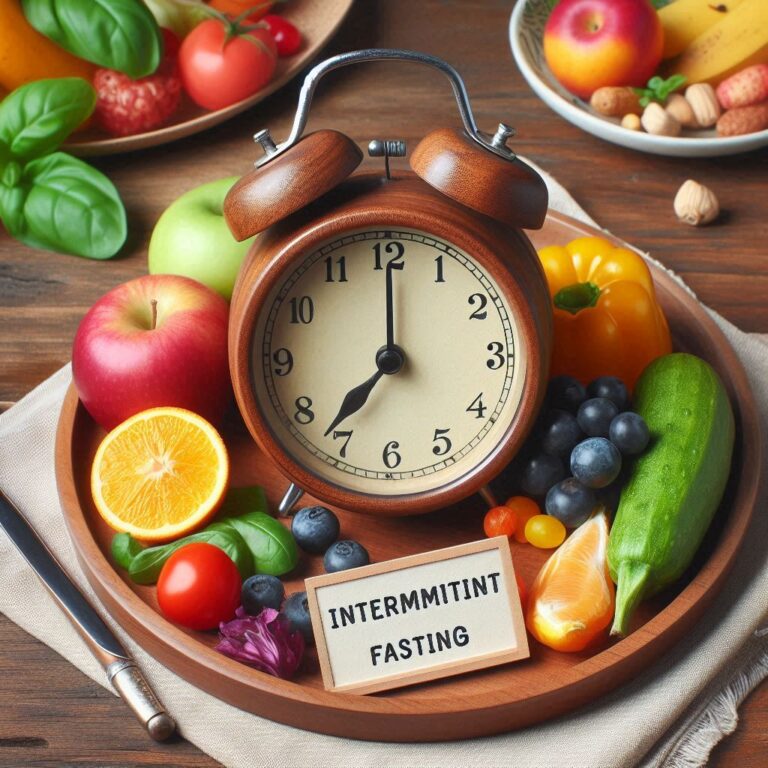Intermittent Fasting Schedule: Best Times To Eat
Intermittent fasting, often known simply as (IF), has captured the attention of many looking to improve their health and lifestyle. Today, I will discuss the best times to eat during Intermittent fasting. It’s a unique eating pattern characterized by alternating cycles of fasting and eating. Unlike a diet that dictates what to eat, IF focuses on when to eat. Intermittent fasting lies not just in its simplicity but also in its flexibility.

There’s no one-size-fits-all when it comes to intermittent fasting schedules.
Some popular patterns include:
16/8 Method
- Fasting Window: 16 hours
- Eating Window: 8 hours
- Example Schedule: Stop eating at 8 PM. The next day, eat between 12 PM and 8 PM.
14/10 Method
- Fasting Window: 14 hours
- Eating Window: 10 hours
- Example Schedule: Stop eating at 8 PM / Eat between 10 AM and 8 PM the next day.
5:2 Diet
- Fasting Days: 2 non-consecutive days a week (consume 500-600 calories)
- Normal Eating: The other 5 days
- Example Schedule: Fast on Monday and Thursday.
Eat-Stop-Eat
- Fasting Window: 24-hour fasting, 1-2 times/week
- Example Schedule: Stop eating from 8 PM to 8 PM the next day.
Alternate-Day Fasting
- Fasting Days: Every other day
- Eating Days: Eat generally on non-fasting days
- Example Schedule: Fast on Monday, Wednesday, and Friday. Eat on Tuesday, Thursday, and the weekend.
Warrior Diet
- Fasting Window: 20 hours
- Eating Window: 4 hours (usually in the evening)
- Example Schedule: Eat between 4 PM and 8 PM.
Each method has its fasting and eating windows and serves different needs and preferences. The key to lasting success? Find a routine that effortlessly integrates into your daily life, enhancing your well-being and becoming a natural part of your life.
I understand that venturing into Intermittent fasting may seem daunting at first. However, it’s crucial to acknowledge that it’s not merely about enduring hunger but rather about embracing a structured eating pattern that can thrive alongside your personal and professional life. It’s about making Intermittent fasting work for you.
Determining Your Optimal Eating Times
Identifying the best meal intervals during intermittent fasting hinges on understanding the advantages and limitations of different eating windows. Let’s begin by discussing the morning-early afternoon window, typically from 8 AM to 4 PM. This timeframe is often recommended since it may dovetail more naturally with your body’s circadian rhythms. Eating earlier is linked to enhanced metabolism and better sleep patterns. However, wrapping dinner by mid-afternoon could present a social challenge, mainly if events or family dinners occur later.
Switch to the midday-evening slot, extending from 12 PM to 8 PM, and you hit what many find to be the sweet spot of flexibility. It’s easier to blend into a lifestyle that includes business lunches or dinners with friends. This period also caters to those with a later start to their day or a preference for evening workouts. But this comfort comes with its caveats; the proximity to bedtime can tempt late-night snacking, a habit that can disrupt sleep and potentially undermine weight management goals.
Lastly, the afternoon-evening window is from about 2 PM to 10 PM. Dining later can be a boon for night owls and those whose society revolves around late dinners. However, if you are tossing and turning at night, consider whether those later meals are the culprit. Eating close to bedtime can mess with your sleep, leaving you feeling restless and potentially impacting your health in the long run.
As our exploration of eating times continues, the importance of integrating intermittent fasting into your routine becomes evident. Your lifestyle, daily habits, and unique body rhythms will serve as the map to your feeding schedule.
The following section will explore how to tailor intermittent fasting to fit seamlessly into your life.

Tailoring Your Intermittent Fasting To Your Life
Don’t see your daily life as just a setting for your meals – it’s the platform where your intermittent fasting journey plays out. To ensure your fasting routine becomes a success story, not a short-lived experiment, it must fit seamlessly with your daily activities, work schedule, and social life.
Start by observing your daily flow.
When are you busiest?
What times do you find yourself naturally reaching for food?
These patterns are your cues for setting an eating window that feels less like a forced march and more like a natural rhythm. If you’re a morning person who loves breakfast, then a 12 PM to 8 PM eating window might make you miss that sunrise special. Conversely, if your evenings are packed with activities, ending your eating window at 4 PM could turn into a nightmare.
Consider how your exercise routine fits into your fast. Your body needs fuel for a workout and nutrients to recover afterward. So, if you’re hitting the gym in the early morning, an eating window that starts at noon may shortchange your performance and recovery. Adjust your fasting period to support, rather than sabotage, your gym efforts.
Now, think about what you want to achieve.
Are you looking to lose weight?
Improve metabolic health?
Each goal might suggest a slightly different eating schedule. Someone aiming for muscle gain might extend their eating window to ensure adequate protein intake throughout the day, while someone aiming for weight loss might be more amenable to a shorter eating period.
Finally, sleep can’t be an afterthought. A big meal before bed could turn your dreams into nightmares of indigestion. If you treasure a restful night’s sleep, aim to close your eating window at least a few hours before hitting the bed. This gives your body enough time to shift from digestion to relaxation, priming you for a good night’s rest.
Intermittent Fasting Success: Pro Tips and Adjustments
Successfully integrating intermittent fasting into your life isn’t just about the clock; it’s about consistency and incorporating sensible habits that bolster the effectiveness of your chosen eating pattern. Here, you’ll find actionable advice to turn Intermittent fasting from a trial into a lifestyle.
HYDRATION IS KEY. Water becomes your best friend while your body takes a break from food. Ensure you’re drinking enough to stay hydrated throughout your fasting window. This practice curbs hunger, maintains energy levels, and supports overall health.
Balance in your meals can make or break your intermittent fasting schedule. When it’s time to eat, focus on nutrient-dense foods. Your plates should host a variety of proteins, healthy fats, and complex carbohydrates to satisfy nutritional needs and keep you feeling full until your next eating window.
Resist the lure of sugary drinks; they can disrupt your fasting state and hamper your results. Stick to herbal tea, water, or black coffee during fasting periods. These beverages can help quench thirst without breaking your fast or spiking your insulin levels.
Summary
Remember, (IF) is not a one-size-fits-all solution. Listen to the signals your body sends you. Persistent hunger, fatigue, or irritability are signs you might need to tweak your eating schedule. Adjustments are perfectly normal and necessary to find the rhythm that aligns with your body’s needs and lifestyle goals.
You are finding the most effective intermittent fasting routine, which is a process of trial and learning. Take your time with initial challenges. Flexibility and patience are your companions on your journey to intermittent fasting success. With time, you’ll discover the pattern that circulates seamlessly with your body’s preferences and daily demands.
If you found this helpful, please check out my other blog, Organic Honeybush Tea Review.
Ask Questions: Are you ready to explore Intermittent Fasting further? Do you have questions? Comment below, and I will answer them. Thank you!








Hi there,
Your detailed guide on intermittent fasting schedules is incredibly informative. I appreciate how you break down the various eating windows and their practical implications for daily life. It’s clear that finding the right fasting routine is about aligning with personal preferences and lifestyle demands, which makes it more sustainable in the long run.
For those new to intermittent fasting like myself, your insights into optimizing eating times and considering factors like exercise and sleep are invaluable. Thanks for demystifying this approach to health and wellness.
-Allie 🙂
Hi Allie,
Thank you so much for your feedback!
I’m glad you found the guide on intermittent fasting schedules informative. It’s great to know that the breakdown of different eating windows and their real-life applications resonated with you. Finding a fasting routine that aligns with personal preferences and lifestyle is crucial for long-term sustainability.
For newcomers like yourself, I’m happy that the insights on eating times, exercise, and sleep have been valuable. Your kind words are truly appreciated, and I’m delighted to help explain intermittent fasting to you.
Best regards,
Michael